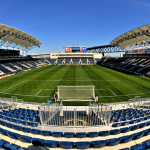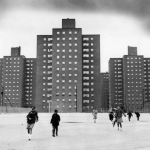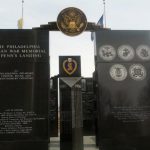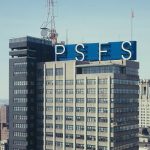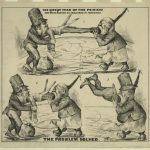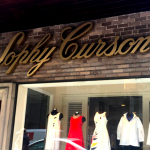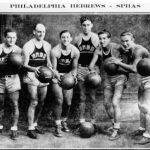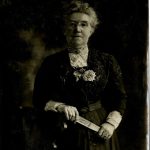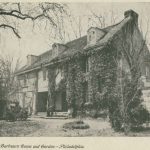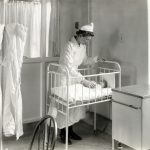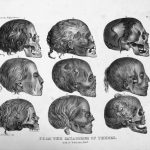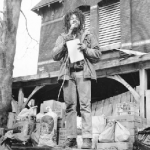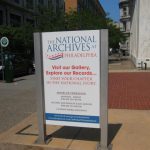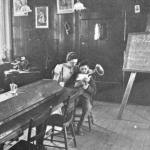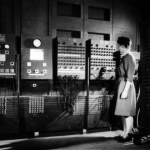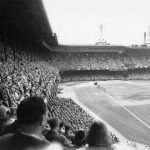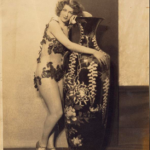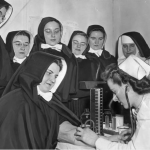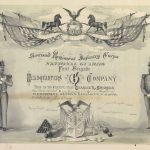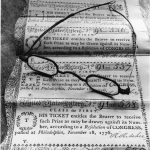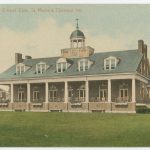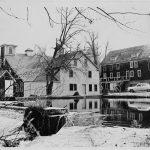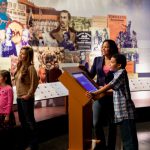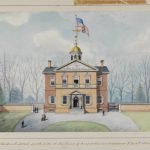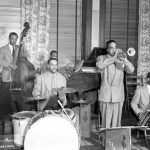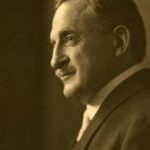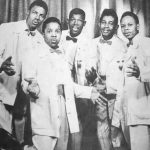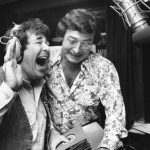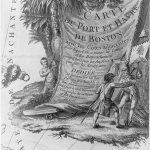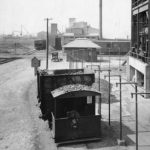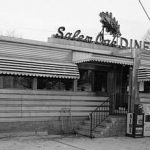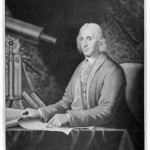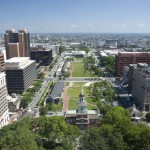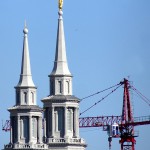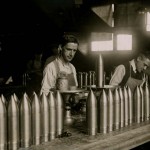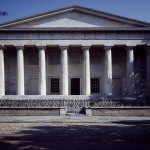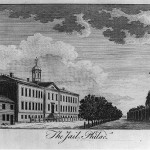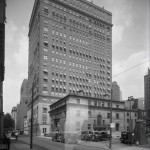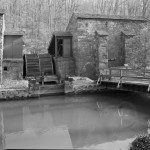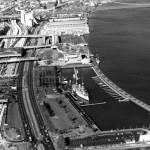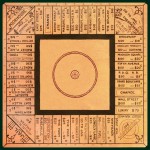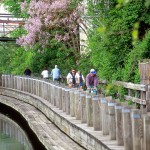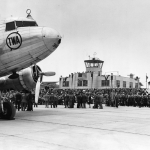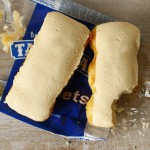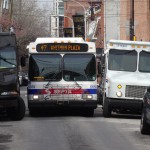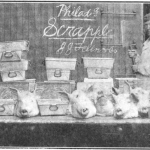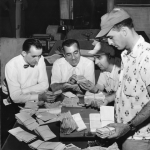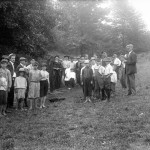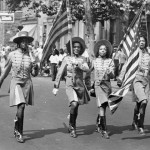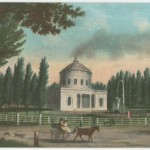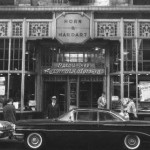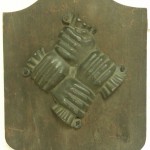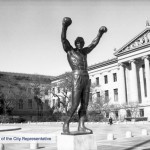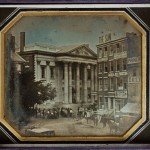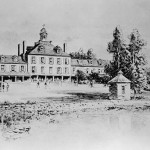Philadelphia and the Nation
Essay
Philadelphia’s central role in the birth of a new nation is not to be underestimated. But the commemoration of the Declaration of Independence, the work of the Continental Congress, and the writing of the Constitution in the city have tended to overshadow the ways in which the Philadelphia region’s entire story is in many ways America’s story. The topics here explore Greater Philadelphia’s central place in an expansive American narrative.
Related Topics: National Connections and Impact
Locations
Essays
- Sugar and Sugar Refining
- Main Line of Public Works
- Basketball (Professional)
- Civil War Museum of Philadelphia
- Aeronautics and Aerospace Industry
- Colonial Revival
- Great Wagon Road
- Turnpikes
- Dinosaurs and Paleontology (Study of Fossils and Prehistoric Life)
- Poetry and Poets
- Elegy (for MOVE and Philadelphia)
- Occupy Philadelphia
- Seventh-day Adventists
- Wanamaker Organ
- Jawn
- University of Pennsylvania Museum of Archaeology and Anthropology (Penn Museum)
- I’d Rather Be in Philadelphia
- 1776
- Philadelphia Cream Cheese
- Historic Preservation
- Arthur Mervyn; or, Memoirs of the Year 1793
- It’s Always Sunny in Philadelphia
- Skate Parks and Skateboarders
- Bakeries and Bakers
- Grocery Stores and Supermarkets
- Horticulture
- Gospel Music (African American)
- Garment Work and Workers
- O Little Town of Bethlehem
- Shrines
- Saws and Saw Making
- Silver Linings Playbook
- Underground Railroad
- Philadelphia (Film)
- Mayors (Philadelphia)
- Silk and Silk Makers
- Autobiography of Benjamin Franklin (The)
- Pharmaceutical Industry
- Soccer
- Textile Manufacturing and Textile Workers
- Plays and Playwrights
- Mennonites
- International Peace Mission Movement and Father Divine
- Environmental Movement
- Irish (The) and Ireland
- Mexican-American War
- Independence Seaport Museum
- Machining and Machinists
- Hurricanes and Tropical Storms
- Black Power
- Poverty
- Historic Districts
- Prisons and Jails
- Zoning (Philadelphia)
- Rock Music and Culture (Late 1960s to Present)
- Gas Stations
- Cold War
- PSFS
- Philadelphia Navy Yard
- Nativism
- Nuclear Power
- Civil Rights (African American)
- Pacific World (Connections and Impact)
- Fashion
- Anglican Church (Church of England)
- Dancing Assembly
- Scots Irish (Scotch Irish)
- Toy Manufacturing
- SPHAS
- Musical Fund Society
- Woman Suffrage
- Women’s Clubs
- Freedom Train
- Orphanages and Orphans
- Opera and Opera Houses
- Armstrong Association of Philadelphia
- Thrift
- Library Company of Philadelphia
- Botany
- Whig Party
- Children’s Aid Society of Pennsylvania
- Free Black Communities
- Classical Music
- National Register of Historic Places (Sites)
- Telephones
- Police Athletic League
- Nursing
- South Street (Song)
- Mummies
- MOVE
- Literary Societies
- Twist (The)
- Dream Garden
- Social Dancing
- Genealogy
- Eugenics
- Magazines, Literary
- Edge Cities
- ENIAC
- Freemasonry
- Whiz Kids
- Inner Suburbs
- Hotels and Motels
- Smoking and Smoking Regulations
- Furnituremaking
- Burlesque
- Convents
- Crowds (Colonial and Revolution Eras)
- Works Progress Administration (WPA)
- Television Shows (About Philadelphia)
- Militia
- General Trades Union Strike (1835)
- Lotteries
- Philadelphia Ten
- Greek War for Independence
- Puerto Rico and Puerto Ricans
- Listen to the Mocking Bird
- Spanish-American War
- Automobile Racing
- Cycling (Sport)
- Historical Societies
- Pennsylvania Prison Society
- Railroad Strike of 1877
- Working Men’s Party
- Public Media
- Ice Hockey (Professional)
- Cricket
- New Year’s Traditions
- United States Colored Troops
- TSOP (The Sound of Philadelphia)
- City Merchant (The); or, The Mysterious Failure
- National Guard
- Locomotive Manufacturing
- Deindustrialization
- Reminder Days
- Civil Defense
- Cordwainers Trial of 1806
- Shoemakers and Shoemaking
- Pennsylvania Charter of Privileges
- Helicopters
- British Occupation of Philadelphia
- Hail, Columbia
- Trade Unions (1820s and 1830s)
- Tobacco
- House of Refuge
- City Beautiful Movement
- Kwanzaa
- Vietnam War
- Artisans
- Infectious Diseases and Epidemics
- Rhythm and Blues
- Boxing and Boxers
- Sports Fans
- Mighty Macs
- Korean War
- Community Development
- Community Development Corporations (CDCs)
- Jazz
- Chemical Industry
- Urban Renewal
- Root Beer
- Public Health
- Privateering
- Meteorology (Study of the Atmosphere)
- Ornithology (Study of Birds)
- Refineries (Oil)
- Doo Wop
- Radio DJs
- Peale Family of Painters
- Art of Dox Thrash
- Woman’s Medical College of Pennsylvania
- Military Bases
- Presidents of the United States (Presence in Region)
- Veterans and Veterans’ Organizations
- Soul Music
- Manufacturing Suburbs
- Coffeehouses
- Loyalists
- Public Markets
- Civil Rights (LGBT)
- Price of a Child (The)
- Scientific Societies
- American Philosophical Society
- Religious Society of Friends (Quakers)
- Home Remedies
- Philadelphia Story (The)
- Enterprise Zones and Empowerment Zones
- Coal
- Log Cabins
- Art of Thomas Eakins
- Arts of Wharton Esherick
- Diners
- Quaker City (The); Or, the Monks of Monk Hall
- University City Science Center
- Astronomy
- Radio (Commercial)
- Country Clubs
- Red City (The)
- Mother’s Day
- Fugitives From Slavery
- Philadelphia Orchestra
- Entomology (Study of Insects)
- Bank of the United States (First)
- Lafayette’s Tour
- Tourism
- Bookselling
- Legionnaires’ Disease
- Typhoid Fever and Filtered Water
- Puerto Rican Migration
- College of Physicians of Philadelphia
- Sports Cards
- Herpetology (Study of Amphibians and Reptiles)
- Model Cities
- Cartoons and Cartoonists
- Mormons (The Church of Jesus Christ of Latter-day Saints)
- Dewey’s Lunch Counter Sit-In
- Union League of Philadelphia
- Board of Health (Philadelphia)
- Rock and Roll (Early Years)
- Arsenals
- Buses
- Bank War
- Vagrancy
- Abscam
- Admiral Wilson Boulevard
- Painters and Painting
- Commercial Museum
- Alien and Sedition Acts
- Articles of Confederation
- Railroad Stations
- Philadelphia Board of Trade
- Superfund Sites
- Brownfields Redevelopment
- Gunpowder Industry
- Vigilance Committees
- Automobiles
- Automotive Manufacturing
- Garies (The) and Their Friends
- Philadelphia Lawyer
- Democratic-Republican Societies
- Revolutionary Crisis (American Revolution)
- I-95
- Philadelphia (Warship)
- Films (Feature)
- Thanksgiving
- Monopoly
- U.S. Presidency (1790-1800)
- Convention Centers
- Book Publishing and Publishers
- Godey’s Lady’s Book
- Pipelines
- Sheppard Lee
- Roosevelt Boulevard
- Bootlegging
- Saturday Evening Post
- Papal Visits
- Salt Making
- U.S. Mint (Philadelphia)
- Martin Luther King Jr. Day
- Carpet Weaving and Rug Making
- Christiana Riot Trial
- Tun Tavern
- Plantations
- Prohibition
- Pennsylvania Hall
- Fries Rebellion
- Maps and Mapmaking
- National Parks
- Lewis and Clark Expedition
- Pennsylvania Impressionism
- Common Sense
- Native and Colonial Go-Betweens
- Private (Independent) Schools
- Shirtwaist Strike (1909-10)
- Football (Professional)
- Whiskey Rebellion Trials
- Philadelphia Campaign
- Proclamation Line of 1763
- Canals
- Native American-Pennsylvania Relations, 1754-89
- Constitutional Convention of 1787
- Appeal of Forty Thousand Citizens
- Airports
- Cast Iron Architecture
- Railroads
- Philadelphia Stock Exchange
- Capital of the United States (Selection of Philadelphia)
- Forts and Fortifications
- Casinos
- Trails (Recreational)
- Tastykake
- Athenæum of Philadelphia
- Society Hill
- Political Conventions
- Savings Societies
- Schuylkill Expressway
- Scientific Management
- Murder of Octavius Catto
- Seven Years’ War
- Colonization Movement (Africa)
- Gallery at Market East
- Trenton and Princeton Campaign (Washington’s Crossing)
- Fair Housing
- Gentrification
- SEPTA
- Indian Rights Associations
- Television
- Mason-Dixon Line
- Scrapple
- War of 1812
- Hog Island
- Columbia Avenue Riot
- Crime
- Playgrounds
- U.S. Congress (1790-1800)
- Native Peoples to 1680
- Columbus Day
- Philadelphia Industrial Development Corporation (PIDC)
- Immigration and Migration (Colonial Era)
- Lynching
- Labor Day
- National Colored Convention Movement
- Gayborhood
- Fort Wilson
- Baseball (Professional)
- World War I
- Pontiac’s War and the Paxton Boys
- Valley Forge
- Medical Publishing
- Immigration (1870-1930)
- Baseball: Negro Leagues
- Philadelphia Plan
- Education and Opportunity
- March of the Mill Children
- Trees
- Automats
- African American Migration
- Sullivan Principles
- Insurance
- Recording Industry
- Byberry (Philadelphia State Hospital)
- Settlement Houses
- Knights of Labor
- Haitian Revolution
- Rocky
- Immigration (1790-1860)
- Bicentennial (1976)
- Great Depression
- Immigration (1930-Present)
- Paints and Varnishes
- Printing and Publishing
- Nativist Riots of 1844
- American Civil Liberties Union (ACLU)
- Political Parties (Origins, 1790s)
- Philadelphia Negro (The)
- Centennial Exhibition (1876)
- Shipbuilding and Shipyards
- Ladies Association of Philadelphia
- Slavery and the Slave Trade
- Abolitionism
- Industrial Workers of the World
- Banking
- Pennsylvania Emancipation Exposition (1913)
- National Freedom Day
- Constitution Commemorations
- Continental Congresses
- Declaration of Independence
-
Philadelphia and Its People in Maps:
The 1790s - Sesquicentennial International Exposition (1926)
- Public Housing
- AIDS and AIDS Activism
- Civil War Sanitary Fairs
- American Bandstand
- Girard College
- Independence National Historical Park
- Independence Hall
- World War II
- Department Stores
- Liberty Bell
- Lazaretto
- Kimmel Center for the Performing Arts
- Higher Education: Private (Religious)
- Bank of North America
- Earthquakes
- Almanacs
- National Constitution Center
- Museum of the American Revolution
- Philadelphia Regional Port Authority
- Child Labor
- Blues Music
- U.S. Supreme Court
- Missionaries
- Socialist Party
- African American Museum in Philadelphia
- Popular Music
- Civil Rights (Persons With Disabilities)
- Black Lives Matter
- Lenape People (Continuing Presence)
- Candy and Candymakers
- Episcopal Church
- Civil Rights (Women)
- Postal Services
- Moran Family of Artists
- Atlantic World
- Delaware River Ports
- Philadelphia AFL-CIO
- Civil War
Artifacts
Map
Professional basketball has a long history in the Philadelphia region, from the first professional league, formed in 1898, to the NBA. During the 1940s, the Warriors drew crowds to the Philadelphia Arena at Forty-Fifth and Market Streets.
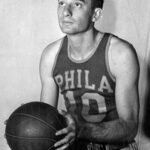
The Colonial Revival expressed nostalgia for the Colonial and Revolutionary eras through architecture, landscape design, and material culture, including the reconstruction of William Penn's Pennsbury Manor.
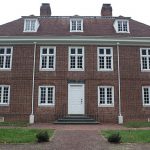
The Philadelphia area has played a major part in paleontology, yielding discoveries that have helped to illuminate millions of years of existence. Fossils found at the former Inversand Quarry in Sewell, N.J., date to the Cretaceous Period.
Elegy (For MOVE and Philadelphia)
In “Elegy (for MOVE and Philadelphia),” Philadelphia poet and playwright Sonia Sanchez questions the paradoxical nature of a city that seemingly set itself and its people ablaze near Sixty-Second Street and Osage Avenue.
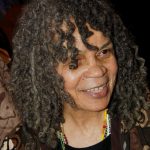
Arthur Mervyn; or, Memoirs of the Year 1793
Philadelphia native Charles Brockden Brown's novel, Arthur Mervyn; or, Memoirs of the Year 1793, became one of the most influential works of American Gothic literature. The author's final resting place is the Arch Street Friends Burial Ground, Fourth and Arch Street.
Baking, one of the earliest businesses in Philadelphia, ranged from small neighborhood bakeries to large companies like the Tasty Baking Company, headquartered by the twenty-first century at the Philadelphia Navy Yard.
Philadelphia ranked as one of the nation’s foremost saw manufacturing centers for much of the nineteenth and twentieth centuries. By the mid-nineteenth century a number of major saw manufacturers operated in the city, including the world’s largest, Henry Disston’s Keystone Saw Works.
The Oscar-winning 2012 movie 'Silver Linings Playbook' was filmed in and around Philadelphia, including the Llanerch Diner in Upper Darby, Delaware County.

Jonathan Demme's 1993 film 'Philadelphia' attempted to reform the public understanding of AIDS at a time of prejudice and hate. In the context of the film, the Mellon Bank Building housed the law firm of protagonist Andy Beckett.
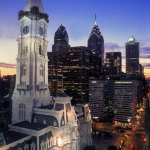
The Philadelphia mayoralty has experienced a variety of changes and challenges since its inception in 1701. The Mayor's Office is located at City Hall.
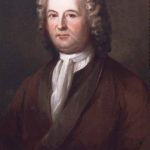
Philadelphia became one of the nation's major manufacturers of silk in the early nineteenth century. The city's most well-known silk goods maker, Horstmann & Sons, was located at Fifth and Cherry Streets.
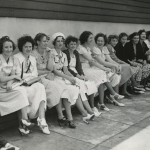
Autobiography of Benjamin Franklin
Over eighteen years, from 1771 until his death, Benjamin Franklin composed his autobiography. His legacy is immortalized at the Benjamin Franklin Museum in Center City.
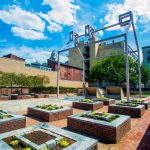
Philadelphia played a key role in the birth of the American pharmaceutical industry during the early nineteenth century. The Philadelphia College of Pharmacy (now USciences) was the nation's first pharmacy college.
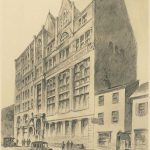
Textile Manufacturing and Textile Workers
Textile production bolstered Philadelphia's economy in the eighteenth and nineteenth centuries. Factories like Manayunk's Washington Print Works, which produced the patterns at right, shipped goods nationwide.
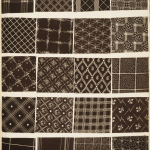
The home of Edwin Forrest, an influential Philadelphia-born actor, later became the Freedom Theatre, the oldest African American theater in Pennsylvania.
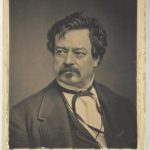
German Mennonites were among the first settlers in Philadelphia in the early 1680s. The 1770 Germantown Meetinghouse remains open as a museum and historic site.
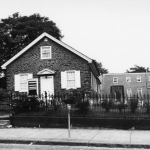
International Peace Mission Movement and Father Divine
The religious Peace Mission Movement was known for its civil rights activism as well as its 'cultic' qualities. The Divine Lorraine Hotel in North Philadelphia hosted many of the Mission's social welfare activities.
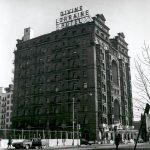
Industrial sites like the Philadelphia Coke Co. plant in Bridesburg brought Philadelphians to the forefront of the environmental movement after World War II. Local residents continue to be active in environmental justice concerns.
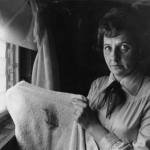
Located here is a memorial to the Irish people and their suffering during the Great Famine between 1845-1850, the famine was one of many motivating factors for the Irish to immigrate to the United States.
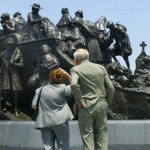
Despite taking place in the American Southwest and Central America, the Mexican-American War (1845-48) had significant ties to the Philadelphia area. A monument to soldiers killed in the war stands in Philadelphia National Cemetery.
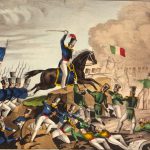
The Independence Seaport Museum is home to an extensive collection of the Greater Delaware Valley's maritime history and two iconic vessels, the Becuna submarine and the USS Olympia.
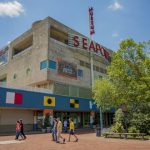
Philadelphia has a long history of machining and machinists. The Tacony Iron Works, at this location from 1881 to 1910, produced structural iron work for the tower and William Penn statue on Philadelphia's City Hall.
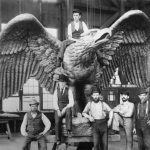
Hurricanes and Tropical Storms
The Greater Philadelphia area's position near the Atlantic Ocean has always made it vulnerable to hurricanes and tropical storms. When storms make landfall, the coast is particularly vulnerable due to seawalls and storm surge.
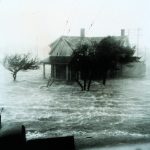
The Black Power movement came to prominence in the 1960s and 1970s. From a storefront headquarters, the Philadelphia Black Panther Party distributed free lunches and information about the organization.
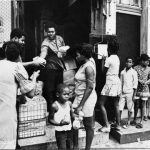
Concentrations of buildings, landscapes, and natural features that collectively reflect the region’s cultural and historical development have been recognized as historic districts. Cooper Street in Camden is one of many historic districts in the region.
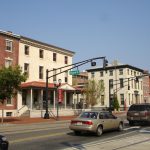
Philadelphia was at the center of the early prison reform movement, first introducing individual cells at Walnut Street Prison and later solitary confinement. The city's prisons later became notorious for conducting experiments on prisoners and a high rate of incarceration.
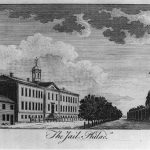
From its inception, zoning became a fraught subject. By empowering neighborhood groups and local politicians with power over land use in their communities, zoning brought such groups in Philadelphia and elsewhere into contest with developers, industrial concerns, and sometimes with other people who wanted to move into their neighborhoods. In 1962, Mayor James Tate signed a major overhaul to the zoning code at City Hall, the first revision to the code since 1933.
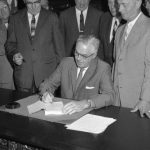
Rock Music and Culture (Late 1960s to Present)
The Electric Factory was opened in 1968 by club promoters, the Spivack brothers. The rock club featured artists such as Janis Joplin, Pink Floyd, and Jimi Hendrix. After the closing of the original club, a second Electric Factory was opened in 1995. The concert venue eventually joined forces with a concert promotion company to form Live Nation Entertainment.
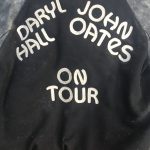
From designs evoking Greek temples built at the dawn of the automobile age to the ubiquitous utilitarian structures of the twenty-first century, gas stations have become a fixture of the Philadelphia area's landscape.
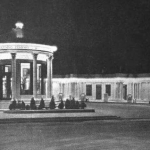
The history of the Philadelphia Navy Yard has been one of constant struggle, repeatedly staring down imminent closure only to be saved at the last second by stalwart local politicians or a timely military conflict. The Navy Yard, located on League Island, operated for 120 years.
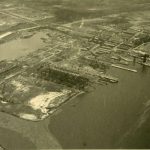
The late twentieth century proliferation of nuclear power plants and a partial meltdown at the Three Mile Island Nuclear Generating station led to widespread protests. The PECO building in Philadelphia was a frequent target.
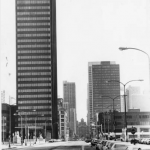
Civil Rights (African American)
Black Philadelphians have fought for civil rights since the nineteenth century and even before. In 1966, demonstrations led to the desegregation of Girard College, established in 1848 as a school for poor, white orphan boys.
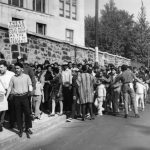
Pacific World (Connections and Impact)
Philadelphia's connections to the Pacific World are as old as the city itself, including early participation in the China Trade and the first Japanese gardens in the United States at the Centennial Exhibition.
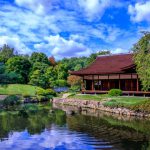
Anglican Church (Church of England)
Completed in 1753, Christ Church was a meeting place for Anglicans before the American War for Independence.
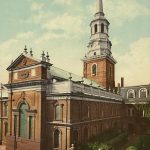
Philadelphia society's elite gathers annually for the Dancing Assemblies. The lavish ball has been held in a number of the city's most respected venues including the City Tavern and the Bellevue-Stratford Hotel.
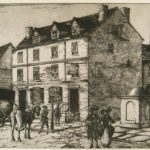
Presbyterian minister William Tennent founded this school in 1726 to train evangelically minded clergy. Critics mocked Tennent for attempting to educate poor country boys, derisively referring to his academy as the “Log College.”
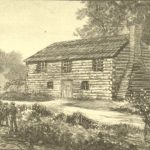
Philadelphia helped define the toy industry in the United States with simple yet engaging toys that became beloved by generations. Schoenhut's Humpty Dumpty Circus featured a camel, which is now housed at the Philadelphia History Museum at Atwater Kent.
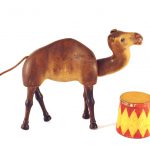
A predecessor for the Philadelphia Orchestra, the Musical Fund Society formed in 1820 to promote professional and amateur musical talent in Philadelphia. For many years, the society operated Musical Fund Hall, the center of Philadelphia's music scene.

Mill-Rae was the home of Philadelphia suffragist Rachel Foster Avery and a meeting place for activists in the early twentieth century. Serving as Cranalieth Spiritual Center since 1996, the home also is on the National Register of Historic Places.
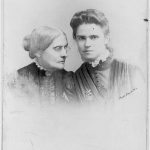
Although initially focused on self-improvement, women’s clubs in the Philadelphia region, like the New Century Club, quickly extended their goals to include community activism.
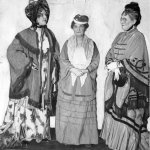
Carrying artifacts and documents of American History, the Freedom Train left from Broad Street Station on a journey to unify the American people against the encroaching threat of communism.
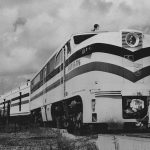
By the early nineteenth century in Philadelphia, private groups established orphanages to care for children whose parents could not support them because of poverty or death. One such institution was Girard College, founded in 1848.
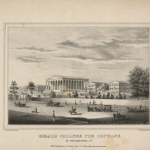
Philadelphia was once home to a number of opera houses that served as venues for its many opera companies. Three of these venues remain standing, including North Broad Street's Metropolitan Opera House.
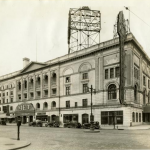
Armstrong Association of Philadelphia
The Armstrong Association of Philadelphia, an interracial organization that aided African Americans with job placement and adequate housing, operated a learning and social center at the Thomas Durham Public School.
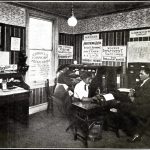
Library Company of Philadelphia
Since its inception in 1727, the Library Company of Philadelphia has evolved from a member based lending library into a invaluable archival resource.
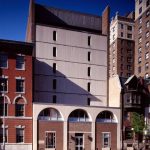
The Whigs, the opposition party to Andrew Jackson and the Democrats during the antebellum era, gave Zachary Taylor their nomination for President at the Chinese Museum, located here in 1848.
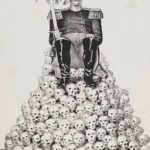
Children’s Aid Society of Pennsylvania
Founded in 1882 to address social issues in Philadelphia, the Children's Aid Society of Pennsylvania merged in 2008 with the Philadelphia Society for Services to Children and formed Turning Points for Children.
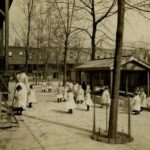
Mother Bethel church in Philadelphia is the oldest AME (African Methodist Episcopal) Church in the United States. Churches were staples for black communities and continue to hold places of leadership.
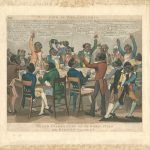
Philadelphia has been home to prestigious classical music groups, venues, and schools like the Settlement Music School. Composers in Philadelphia also wrote the first classical pieces penned in the American colonies.
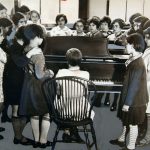
National Register of Historic Places
The first district in the region to be listed on the National Register was the Plymouth Meeting Historic District in Montgomery County in 1971, centered on the Plymouth Friends Meeting and Abolition Hall.
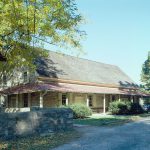
The telephone was first demonstrated at the 1876 Centennial Exhibition. Since then Philadelphia has been home to many telephone innovations and several telephone companies, including Bell Telephone, which built offices at 1827 Arch Street.
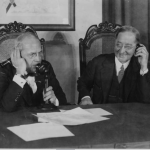
Established in 1947, the Philadelphia Police Athletic League has sought to foster relationships between police officers and the communities they serve.
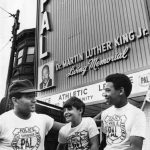
The Orlons, who recorded the hit song 'South Street,' formed at Overbrook High School in West Philadelphia in the 1950s.
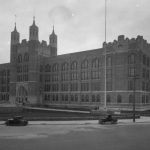
Literary Societies provided Philadelphia's elite with a place for intellectual and artistic discourse. Some, like the Acorn and Rittenhouse Clubs, remained active in the twenty-first century.
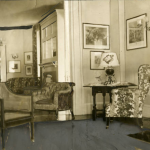
Chubby Checker ushered in a new dance craze with his recording of 'The Twist.' He is celebrated, together with other South Philadelphia musicians, in a mural at Broad and Tasker Streets.
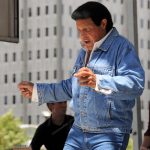
The renowned Dream Garden, a glass mosaic designed by Maxfield Parrish with favrile glass by Tiffany Studios, has stood in the foyer of the Curtis Publishing Building since 1916.
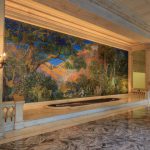
From the minuets and waltzes of the city's early years to jazz, swing, and the tango, social dance has been an active part of the Philadelphia area's social scene. Dance schools pepper the region, including one on Rittenhouse Square.
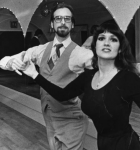
Philadelphia was home to a succession of literary magazines that helped establish a national literary culture. Among them, Curtis Publishing on Walnut Street produced The Ladies Home Journal and The Saturday Evening Post.
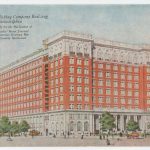
Edge cities like Cherry Hill, New Jersey, emerged after World War II and drained the older cities and suburbs of jobs and residents while promoting 'car culture' with their office parks, highways, and retail and entertainment venues.
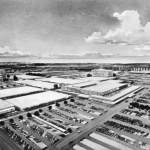
Philadelphia was one of the first American cities with a branch of the fraternal society known as the Freemasons, whose ornate temple in Philadelphia is one of the most prominent in all of Freemasonry.
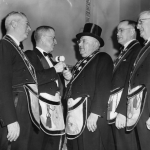
The suburbs within about eight miles of the Philadelphia city limits developed their own character and cycles of prosperity and struggle. The Borough of Narberth thrives on its family atmosphere and easy commute time--less than 30 minutes by rail.
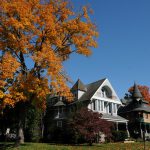
Philadelphia became an early leader in hotel development, introducing innovations in the nineteenth and twentieth centuries. The Bellevue-Stratford Hotel was widely considered to be the most extravagant hotel in the country.
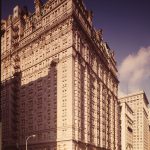
Smoking and Smoking Regulations
Tobacco has been smoked in the Philadelphia area for social, medicinal, and religious uses since the precolonial era. N.W. Ayer & Son on Washington Square created ads for both R.J. Reynolds’ and Phillip Morris Companies.
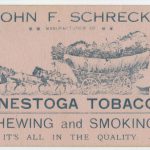
An abundance of local and imported woods, a large immigrant population, and a bustling port combined to make Philadelphia one of the centers of American furniture making in the Colonial and Early Republic eras. Many examples are in the Philadelphia Museum of Art.
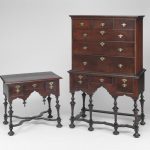
Crowds (Colonial and Revolution Eras)
Ordinary people helped shape the political culture by engaging in public celebrations, civil disorder, and, occasionally, collective violence. Crowds in the State House yard, for instance, heard and cheered the Declaration of Independence.
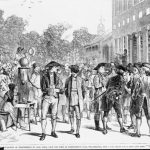
Works Progress Administration (WPA)
The WPA provided jobs for thousands of Philadelphians, but not enough to help everyone. WPA workers added a rail line to the Benjamin Franklin Bridge, the line that today carries PATCO trains between Philadelphia and Camden, New Jersey.
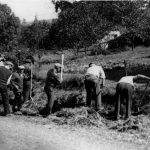
Television Shows (About Philadelphia)
The Philadelphia region has provided a backdrop for many television programs, including an early season of MTV's the Real World, whose cast lived in an old bank building at Third and Arch Streets.
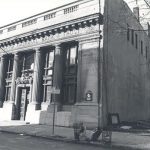
General Trades Union Strike (1835)
The General Trades Union Strike of 1835 was the nation's first general strike, prompted by coal heavers working along the Schuylkill River and demanding a ten-hour day.
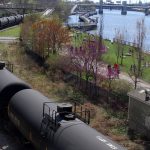
The Philadelphia Ten was all-women’s group of painters and sculptors that exhibited together for nearly thirty years starting in 1917. Works of the Ten can be found at Woodmere Museum of Art on Germantown Avenue.
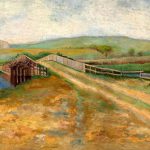
During the Greek War for Independence (1821-28), Philadelphians helped arouse public sentiment in favor of the Greeks and raised money and provisions to aid the cause. The Second Bank was modeled on the Parthenon of Athens.
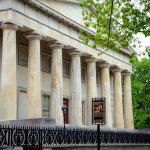
Relations between Philadelphia and Puerto Rico reach back to colonial times. Today, North Fifth Street's “El Bloque de Oro,” or “Golden Block,” remains a vibrant neighborhood of Latino culture and commerce.
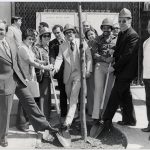
'Listen to the Mockingbird' was written in 1855 by Septimus Winner, who lived and worked at a studio at 1706 N. Sixteenth Street in his later life.
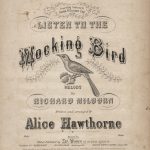
The Spanish-American War had a significant influence on Philadelphia, and the USS Olympia, the flagship of the U.S. Asiatic Squadron, is permanently moored as Penn's Landing.
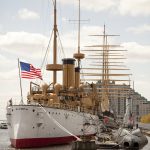
In 1926, the National Motor Racing Association constructed one of the nation’s first purpose-built dirt speedways in Langhorne.
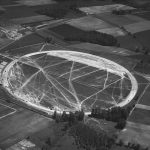
The Philadelphia International Cycling Classic made famous the “Manayunk wall,” where thousands of spectators lined Lyceum Avenue to watch cyclists ascend the 285-foot climb with a 17 percent grade at its steepest segment.
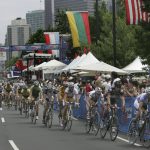
Since the early nineteenth century, a number of historical societies have called Philadelphia home, from small religious and local history groups to the Historical Society of Pennsylvania.
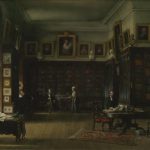
Spurred by reports of deplorable conditions at the Walnut Street Jail, a nondenominational group of religiously motivated activists set out to reform Philadelphia's prisons. Their reforms soon spread to prisons around the world.
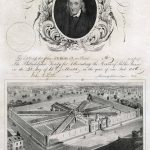
The arrival on July 21, 1877 of Philadelphia militiamen, deployed from their armory at 21st and Ranstead Streets, turned the relatively peaceful railroad strike in Pittsburgh into a scene of violence and disorder.
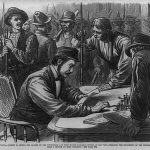
Rooted in a trade union coalition that formed near this location, the Working Men's Party organized the city's laboring class, gained seats in city government, and pressured the city and state to change laws that impacted poor and working-class citizens.
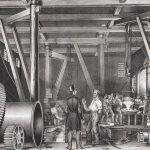
WHYY moved into television programming in 1957, broadcasting from studios at 1622 Chestnut Street—a renowned Art Deco building formerly home to WCAU.
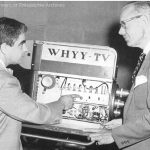
Despite a rocky start and several failed franchises, ice hockey has grown to become one of Philadelphia's most popular professional sports.
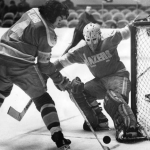
From a quiet holiday for visiting friends, to Mummers and fireworks, Philadelphians have always loved to celebrate New Year's. With new immigrants came new holiday traditions. The Mummers Museum is on 'Two Street.'
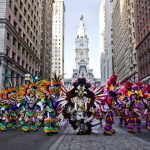
Over 10,000 African Americans from the Philadelphia area enlisted in the United States Colored Troops during the Civil War and trained at Camp William Penn. Some earned the highest military accolades for their service.
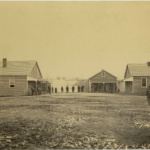
TSOP (The Sound of Philadelphia)
Local record label Philadelphia International Records scored a #1 hit when they records 'TSOP' -- The Sound of Philadelphia -- for the national television program Soul Train.
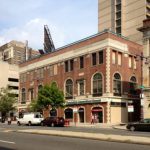
City Merchant (The); or, The Mysterious Failure
A fictional account of real events, The City Merchant by John Beauchamp Jones blames the tumultuous events of the antebellum period on abolitionists and unscrupulous real estate deals. The Second Bank of the United States is part of the plot.
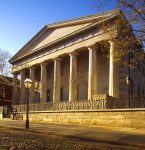
The roots of the National Guard trace to Philadelphia and congressional action during the city’s decade as U.S. capital. Pennsylvania, New Jersey, and Delaware all have Guard units, including the 177th Fighter Wing at Atlantic City Airport.

Baldwin Locomotive dominated the steam-locomotive business. In 1906 alone, the Baldwin Locomotive Works produced 2,666 steam locomotives and employed more than eighteen thousand workers at its facilities on North Broad Street.
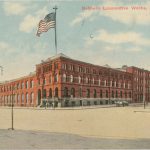
High labor costs, evolving technology, and changing tastes led industry to flee Philadelphia, leaving in its wake unemployment and scarred neighborhoods. At Broad and Lehigh, the Botany 500 building once was a Ford plant where soldiers' helmets were produced for WWI.
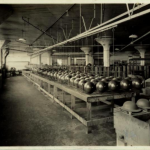
The annual Reminder Days demonstration at Independence Hall predated the Stonewall riots and stand among the first gay rights demonstrations in the United States.
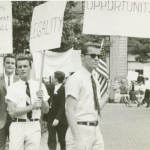
From colonial militias to Cold War fallout shelters and nuclear bomb drills, Philadelphia's citizens have prepared for disaster throughout the city's history. Civil Defense remnants still show up, including fallout shelter signs at City Hall.
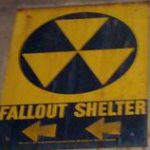
Shoemaking was a large and influential occupation in early Philadelphia. In 1827, cordwainer William Heighton founded the Mechanics' Free Press and helped found the Mechanics’ Union of Trade Associations at Chestnut and Bank Streets.
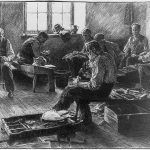
Pennsylvania Charter of Privileges
In 1701 before William Penn left Pennsylvania for the last time, he granted the Charter of Privileges which granted the legislature the ability to govern itself. Pennsbury Manor was Penn's home in Pennsylvania.
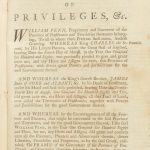
Philadelphia was the cradle of the nation's rotary-wing aviation in the twentieth century. The Piasecki Aircraft Corporation, formed in 1955 and located in Essington, produced the world’s first shaft-driven compound helicopter in 1962.
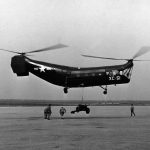
British Occupation of Philadelphia
On September 26, 1777, the British army marched into Philadelphia, beginning an occupation that lasted until the following spring. For nearly seven weeks, British resupply was impeded by Fort Mifflin on the Delaware.
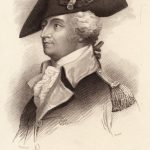
Joseph Hopkinson lived on Spruce Street while he was drafting the lyrics to 'Hail, Columbia,' which for many years served as the unofficial national anthem.
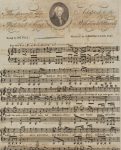
Philadelphians organized trade unions and supported one of the most successful labor demonstrations in the antebellum period, the General Strike of 1835. Soon after the strike began, protesters filled the Merchants' Exchange on Walnut Street.
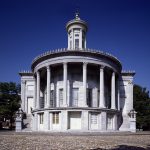
Established in 1826 at the later intersection of Fairmount and Ridge Avenues, the Philadelphia House of Refuge provided an alternative to prisons for incarcerating juvenile delinquents and child vagrants.
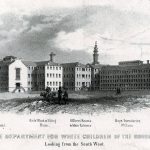
The City Beautiful Movement had significant influence on Philadelphia, including Rittenhouse Square, redesigned in 1913 with diagonal walkways, fountains, tree plantings, and sculptures. 'Billy' is a public favorite at the southwest corner.
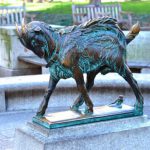
During the Vietnam War era, demonstrations were common at JFK Plaza near City Hall as well as symbolic sites such as the Liberty Bell and Independence Hall.
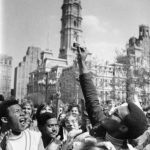
Philadelphia suffered many epidemics in its early years, and Pennsylvania Hospital on Spruce Street was in the forefront of battling them. Most were overcome by the early twentieth century, but some, like polio and HIV, posed new challenges.
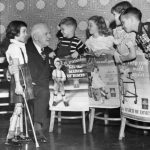
An offshoot of the city's long jazz and African American vocal music traditions, rhythm and blues music saw Philadelphia musicians drawing crowds. A key figure was bandleader Louis Jordan, who played at the Earle Theatre at Eleventh and Market Streets.
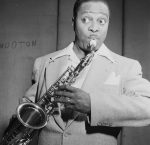
In 1961, the legendary Blue Horizon opened its doors to professional boxing shows on North Broad Street in North Philadelphia. For most Philadelphia boxing fans who packed the hall, the former Moose Hall was Mecca.
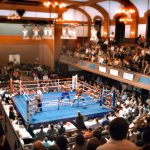
Philadelphia is known for the enthusiasm of its sports fans, and Citizens Bank Park, which opened in 2004 as home of the Philadelphia Phillies baseball team, is a hotspot of cheers and jeers during the baseball season.

Immaculata University is the home of the historic Mighty Macs women's basketball team
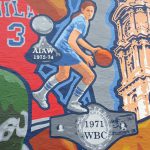
The early 1950s conflict between North Korea and South Korea had a big impact on Greater Philadelphia, leading to a surge in shipbuilding employment and the deaths of hundreds of local servicemen.
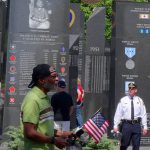
The Community Development movement helped improve the city in many ways. In one case, Bright Hope Baptist Church, working with a redevelopment plan approved by City Council in 1958, built Yorktown, 635 single-family homes in North Philadelphia.
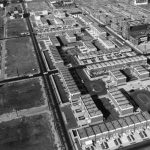
Community Development Corporations (CDCs)
The Garden Center, funded by the New Kensington Community Development Corporation, was among CDCs that helped to rebuild some of Philadelphia’s neighborhoods.
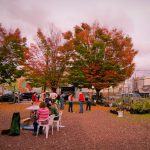
Greater Philadelphia was a chemical center from the eighteenth century. In 1864, Harrison Brothers opened a massive facility on Gray's Ferry Avenue. In 1917, DuPont purchased the entire Harrison Brothers enterprise.
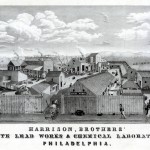
Philadelphia was a leader in urban renewal in the decades following World War II. The plan to revitalize Society Hill, for example, employed an innovative combination of smaller-scale spot demolition, modern infill construction, and historic preservation.
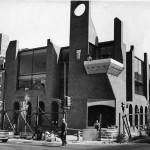
Philadelphia has waged public health campaigns across its history, including America's first almshouse and walk-in public health clinic and the Lazaretto Quarantine Station.
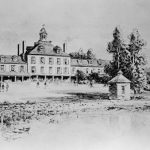
Philadelphia's large port made it a hotbed for privateering, the legal capture of enemy ships by private citizens. This career could be lucrative and some privateers built large estates with their earnings.
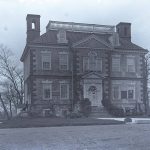
Meteorology (Study of the Atmosphere)
Philadelphians have pursued significant scholarly and popular interests in meteorology since the eighteenth century. The National Weather Service provides local forecasts from its base in Mount Holly, N.J.
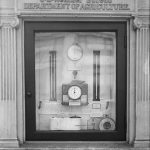
Many pioneers in the field of ornithology called Philadelphia home, including Alexander Wilson and John James Audubon, who was based near a town that changed its name to Audubon.
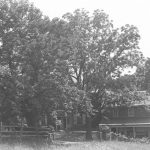
Philadelphia emerged as a petroleum hub in the second half of the nineteenth century. In 1926, Aero Service Corporation captured aerial views of the Atlantic Refining Company in South Philadelphia.
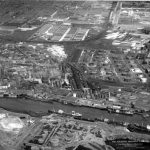
For over 125 years, the family headed by Charles Willson Peale formed a prolific artistic dynasty. Their homes included Belfield farm, purchased by Peale in 1810 and later part of La Salle University.
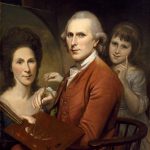
Dox Thrash developed his skills as a printmaker under at the Graphic Sketch Club, which in 1944 became the Samuel S. Fleischer Art Memorial.
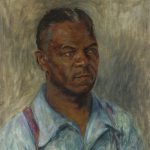
Woman’s Medical College of Pennsylvania
The first medical school in the world for women authorized to award them the M.D., Woman's Medical College moved to this location In 1862.
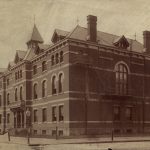
Since the American Revolution era, military bases have shifted in size and economic impact during times of war and peace. The Naval Shipyard in South Philadelphia, where 22,000 workers once built ships, became The Navy Yard office park.
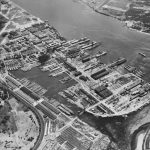
Presidents of the United States (Connections to Region)
U.S. presidents have long visited Philadelphia to invoke the historic values of the country's founding documents. Independence Hall has been the backdrop for many such visits, beginning in 1833 with Andrew Jackson.
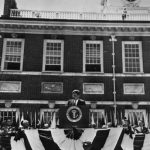
Veterans and Veterans’ Organizations
Military veterans began organizing during the waning days of the Revolutionary War and continued to form organizations such as the Philadelphia Veterans Advisory Commission, established in 1957 and located in City Hall.
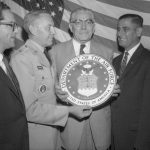
309 S. Broad Street was home first to Cameo-Parkway, then Philadelphia International Records, both of which helped shape the Philadelphia soul sound. The building was demolished in 2015 to make way for condos.
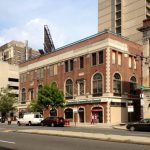
Although early industrialization took root mainly in urban centers, a substantial share of the Philadelphia region’s manufacturing sprang up in small towns outside the city. The main building of the Lee Tire and Rubber Company was built in 1909 in Conshohocken.
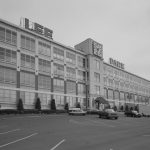
Coffeehouses have been an integral part of the region's social fabric since the eighteenth century. The Old London near the Delaware River waterfront was Philadelphia’s leading coffeehouse in the 1760s, owned by printer William Bradford.
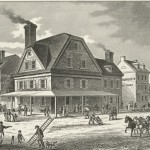
Public markets in Philadelphia belong to an ancient tradition of urban food provisioning. The Reading Terminal, which opened in 1892, opened a new era for urban food marketing and distribution.
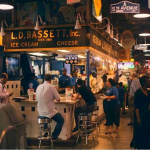
From 1965 through 1969, activists marched for gay rights each July Fourth in front of Independence Hall on July fourth. A historical marker at Sixth and Chestnut Streets commemorates the demonstrations, which became known as Annual Reminders.
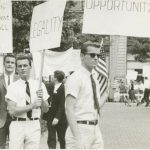
Since the colonial era, Philadelphia scientists have formed scientific societies. Many, including the Wagner Free Institute of Science in North Philadelphia, still exist and operate museums.
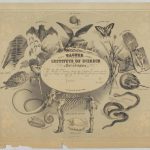
American Philosophical Society
Established in 1743 by Benjamin Franklin and John Bartram to 'promote useful knowledge,' the American Philosophical Society brought renown to colonial scientists. It continues its intellectual pursuits on Fifth Street near Walnut.
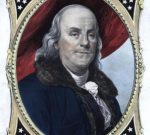
Philadelphia was Quaker William Penn's 'holy experiment' in founding a colony of virtuous Quakers. The influence of the church can still be felt today, and the Arch Street Meeting House still stands.
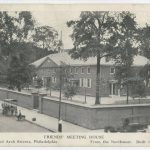
From the earliest days of Philadelphia, local residents have used plants, tonics, and Native American wisdom to avoid a visit to the doctor's office. 'Curative' soda has roots at the Physick House on Fourth Street
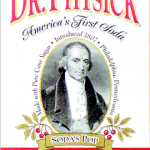
Philip Barry's play about Philadelphia's Main Line society spawned an Academy Award winning film and a musical and was credited with reviving Katharine Hepburn's flagging career. Ardrossan in Villanova was Helen Hope Montgomery Scott's family estate.
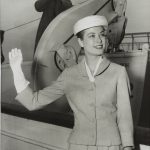
Enterprise Zones and Empowerment Zones
The enterprise zone and its successor the empowerment zone arose from policies that tackled urban decline, most notably with tax incentives for business. The Crane Arts building in Fishtown was one success.
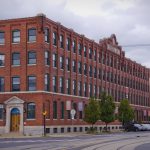
Scandinavians introduced the log cabin to America when they settled New Sweden in 1638. The Lower Swedish Log Cabin in Upper Darby, Pennsylvania, exemplified the typical seventeenth-century Swedish design.
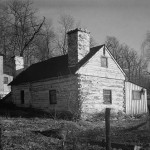
The art of Thomas Eakins (1844-1916) is more deeply entwined with the city of Philadelphia than that of any other artist of the nineteenth century. His home became headquarters for the city's Mural Arts Program.
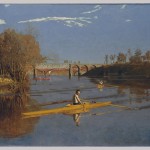
In his Paoli Studio, Wharton Esherick crafted iconic pieces of twentieth century American Art.
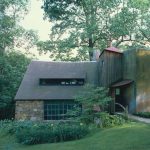
Quaker City (The); Or, the Monks of Monk Hall
The Quaker City, a Gothic novel written in the 1840s by George Lippard, is set in part along the Delaware River waterfront, later developed as Penn's Landing.
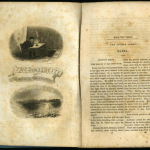
University City Science Center
University City Science Center, the nation's first urban research park was conceived as an ambitious urban renewal project, but ignited racial tensions in a city marred by poverty. After a slow start, the Science Center eventually prospered.
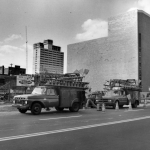
Philadelphia had many roles in the growth of commercial radio, including the manufacture of radios. For a few years, Atwater Kent, with a plant on Wissahickon Avenue, was the country's top radio maker.
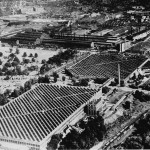
Country clubs originated in the 1890s as elite, family-oriented havens usually emphasizing golf. Among the earliest clubs was the Philadelphia Country Club, now located in Gladwyne.
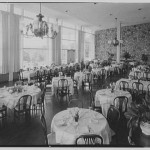
Written by S. Weir Mitchell, <i>The Red City</i> was set in 1790s Philadelphia, a place divided by the Federalists and Republicans and a place that served as a refuge for French emigres. The President's House served as the office and residence for President George Washington.
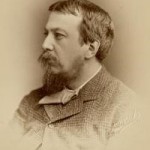
The formal celebration of Mother’s Day is often attributed to Anna Jarvis, whose efforts to make it an official holiday were supported by John Wanamaker, whose department store (now Macy's) stood at Market and Juniper Streets.
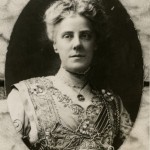
Because of its abolitionist posture, Pennsylvania became a haven for fugitive slaves from neighboring states. Slave catchers and abolitionists tangled, and some cases were decided by hearings in what came to be known as Independence Hall.
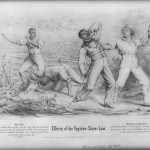
Founded in 1900, the Philadelphia Orchestra developed into an iconic organization for Philadelphia and cultural ambassador to the world. The orchestra's home is the Kimmel Center for the Performing Arts.
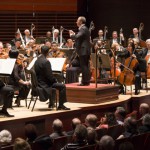
Naturalists and illustrators helped make Philadelphia a center for the study of insects—entomology—as early as the eighteenth century. The butterfly collection of Titian Peale today resides in the Academy of Natural Sciences of Drexel University.
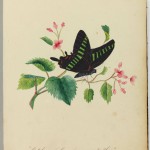
Bank of the United States (First)
Originally located in Carpenters' Hall, the First Bank of the United States relocated to 116 S. Third Street in 1797.
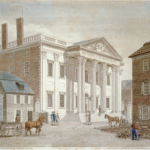
Bookstores have long been an important part of the economic and cultural fabric of Philadelphia. Leary’s Book Store, one of the city’s most popular places to buy books in the nineteenth century, opened a store at this Ninth Street location in 1877.
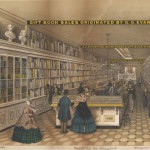
The 1976 Legionnaire's disease outbreak centered on the Bellevue-Stratford Hotel, where the disease's victims had gathered for an annual American Legion convention.
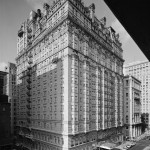
Typhoid Fever and Filtered Water
Typhoid fever and other disease outbreaks associated with contaminated water compelled Philadelphia to build filtering plants in the early 1900s, including one in the Roxborough section.
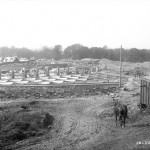
Puerto Ricans migrated to the Philadelphia region in search of economic opportunity. The clustering of Puerto Rican-owned businesses around Fifth Street and Lehigh Avenue developed into the “Golden Block” (El Bloque de Oro) retail area.
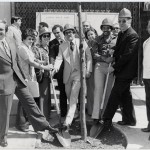
College of Physicians of Philadelphia
The College of Physicians of Philadelphia was founded in 1787 “to advance the science of medicine and to thereby lessen human misery.” It created professional standards and provided for the exchange of medical knowledge, while also establishing a renowned medical library and medical museum.
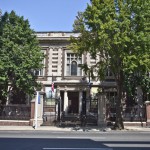
Sports card collecting has strong ties to Philadelphia, where three companies--American Caramel, Fleer Corporation, and Bowman Gum--were pioneers. Fleer's final plant before it closed was on Tenth Street in the Olney section.
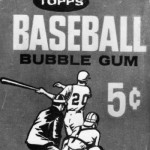
Herpetology (Study of Amphibians and Reptiles)
Amphibians and reptiles fostered rich scientific discussions among early Philadelphia naturalists, including William Bartram and Charles Willson Peale, and the Academy of Natural Sciences published research on the subject.
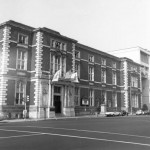
The Model Cities program called for federal services to redevelop the nation’s poorest communities. In 1967, North Philadelphia was designated for renewal, but efforts faltered and goals changed, with a textile company moved from North Broad Street to Spring Garden and Seventh Street.
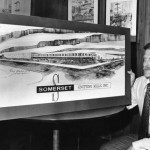
As political, economic, and cultural capital of the early U.S., Philadelphia became a center for producing political cartoons and humorous caricatures, starting with Benjamin Franklin's widely reprinted 'Join, or Die' cartoon.
In 1965, discriminatory treatment at a Dewey's restaurant on South Seventeenth Street spurred the first such protest by the LGBT community. Faced with days of protest, the restaurant changed its policy.
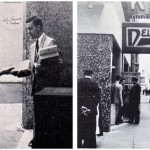
During the Civil War, a group of pro-Union Republicans founded the Union League. Since then, it has transformed into the city's premier social club.
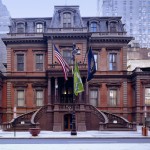
Board of Health (Philadelphia)
The Board of Health, located here, is a board the Philadelphia Department of Public Health composed of the Health Commissioner, who serves as President, and seven mayoral appointees.
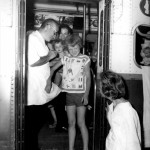
Beginning in the 1920s, the Philadelphia region’s independent transit companies added motorized buses. The south east corner of 13th and Filbert Streets marks the location of the old Union Bus Terminal. Today, The Greyhound station on Filbert Street is just a few blocks away from the old Union Bus Terminal, which was a Thirteenth and Filbert.
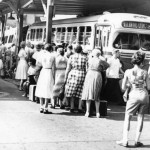
Planned as an aesthetically pleasing gateway between Philadelphia and Camden, Admiral Wilson Boulevard became a route tarnished by crime and sex work before it was cleaned up in anticipation of the Republican convention of 2000.
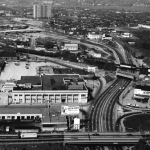
Philadelphia has a distinguished history as a center of American painting. The Pennsylvania Academy of the Fine Arts, founded in 1805, continues to train artists at its location on Broad Street.
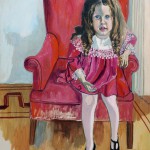
Founded in 1897, the Commercial Museum promoted the merits of international trade. Later renamed the Civic Center Museum, it closed in 1994.
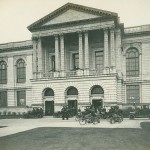
Passed while Congress met in Philadelphia, the Alien and Sedition Acts created a political backlash during the presidency of John Adams.
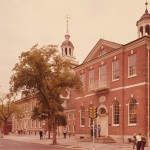
After the work of Independence, the Second Continental Congress worked on drafting the Articles of Confederation, the first Constitution of the United States, at this location.
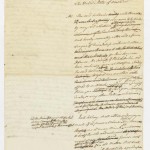
Since the dawn of rail transportation, Philadelphia has been home to a number of grand railroad stations.
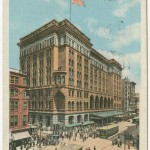
The Merchants' Exchange was an early home of the Philadelphia Board of Trade, which promoted economic development.
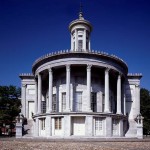
By the late twentieth century Greater Philadelphia held some of the nation’s highest concentrations of environmentally hazardous “Superfund” sites. The Publicker Industries site was judged as Philadlephia's worst Superfund site.
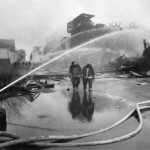
The polluted land known as “brownfields” resulted from Greater Philadelphia's industrial heritage, but remediation has turned many tracts into productive sites, including PPL Park, a soccer stadium and concert venue that opened in 2010 in Chester.
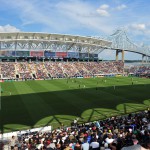
Vigilance Committees (sometimes called Vigilant Committees) formed to protect fugitives and potential kidnap victims. Robert Purvis was one of Philadelphia's most prominent abolitionists. His home at Ninth and Lombard Streets had a secret area for hiding slaves.
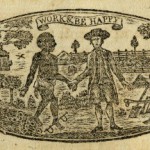
Cars became a prominent force in Philadelphia's development, and by the end of World War I, Philadelphia's "automobile row" stretched from Spring Garden along North Broad Street roughly to Girard Avenue.
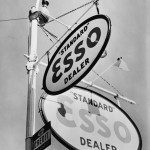
Car manufacturing once provided thousands of jobs in Philadelphia, including many at the Ford assembly plant opened in 1914 at North Broad Street and Lehigh Avenue. During the war, the military made helmets there.
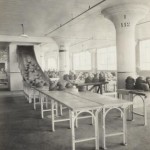
The central event in the novel, 'The Garies and Their Friends,' is a graphically-rendered race riot, evoking the historical riots of 1834, 1838, 1842, and 1849. One of these riots, the Lombard Street Riot, has a historical marker located at Sixth and Lombard Streets.
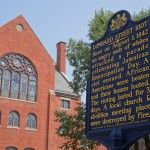
The nineteenth-century phrase 'puzzle a Philadelphia lawyer' means to pose a difficult problem only an expert could solve. Today, Philadelphia lawyers can be seen at work in the Criminal Justice Center on Filbert Street.
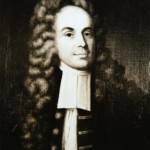
Democratic-Republican Societies
Peter Muhlenberg (1746-1807) of Trappe, Pa., was among the founders of the first of these societies, the German Republican Society of Philadelphia.
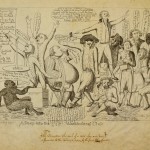
Revolutionary Crisis (American Revolution)
On the night of September 16, 1765, a large mob gathered at the State House to target individuals associated with the Stamp Act, including Ben Franklin.
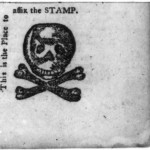
Philadelphians raised money in one week during June 1798 to build the USS Philadelphia to help increase American naval power to protect commerce. The frigate was built at Humphrey’s & Wharton Shipyard on the Delaware River.
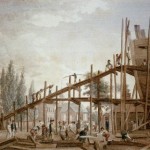
Philadelphia has been used as the setting of many recent films, but the industry's history in the city dates back to its very birth in the 1890s. In the early 1900s, Lubin Studios in North Philadelphia was a pioneer in silent film production.
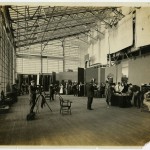
Thanksgiving Day traditions evolved over time while retaining themes of early thanks-giving feasts. Philadelphia, home to the first Thanksgiving Day Parade, contributed to many traditions as they came to be practiced across the nation. In Philadelphia, the parade goes up Franklin Parkway to the Art Museum.
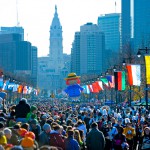
Although the federal government under the U.S. Constitution went into operation in New York, the capital moved to Philadelphia in 1790. George Washington lived in the President's House, as did John Adams when he succeeded Washington.
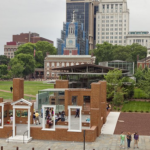
Philadelphia-area residents and visitors have required places for large assemblies since the colonial era. Today the Pennsylvania Convention Center downtown is the city's main site for conventions.
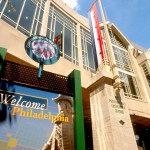
Book Publishing and Publishers
Book publishing flourished in Philadelphia in the nineteenth and twentieth centuries. Beginning with Benjamin Franklin, the city eventually hosted many competing publishing firms.
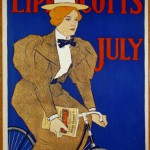
Godey’s Lady’s Book was the first successful women’s magazine and most widely circulated magazine in the antebellum United States, published on Chestnut Street in Philadelphia.
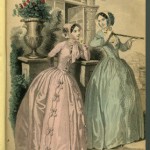
The discovery of oil in Titusville, Pennsylvania, and the drilling of the first successful well in 1859 led to an oil revolution. Soon pipelines emerged as a key to oil transport, and pipeline growth continues today. Some lines reach refineries at Marcus Hook, near the state line between Pennsylvania and Delaware.
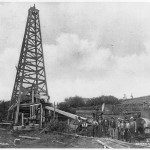
The novel 'Sheppard Lee' became famous in its day for its literary style and social commentary as its namesake character's soul migrated into the bodies of recently deceased acquaintances. Author Robert Montgomery Bird lived at 247 S. Tenth Street.
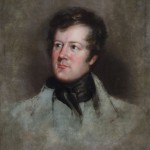
Built between between 1903 and 1914, Roosevelt Boulevard began in an era of political corruption but became a vital factor for later development of Northeast Philadelphia.
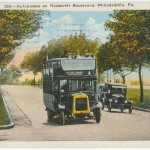
During Prohibition, Philadelphia earned a reputation rivaling Chicago, Detroit, and New York City as a liquor-saturated municipality. Near Thirteenth and Locust Streets was The 21 Club, one of Max “Boo Boo” Hoff’s speakeasies.
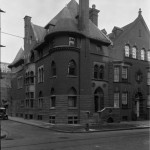
The Saturday Evening Post’s circulation grew from two thousand to over three million copies an issue. This growth allowed the Curtis Publishing Company in 1910 to build a grand headquarters at the corner of Sixth and Walnut Streets near Independence Hall.
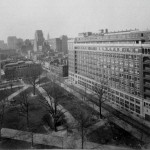
The public Mass held by Pope John Paul II on Logan Circle on October 3, 1979, drew more than a million people, by police estimates, stretching on the Benjamin Franklin Parkway from City Hall to the Art Museum and beyond.
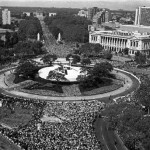
With the Revolution, the young nation lost its main source of salt--England--and needed a new supply. Pennsylvania turned to a scheme involving Toms River, New Jersey, to no avail.
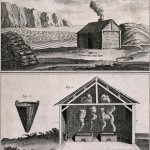
United States Mint (Philadelphia)
Coins have been minted in Philadelphia as long as the federal government has produced legal tender coins. Since 1969, the mint has been located on the edge of Independence Mall, its fourth location in the city.
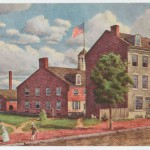
Martin Luther King Jr. Day observances have been held annually in Philadelphia since the 1970s. A focal point is Girard College, where King held a rally in 1965, as well as a ceremony at the Liberty Bell.
In its early twentieth-century heyday, Philadelphia's carpet and rug industry represented the nation's greatest concentration of factories making household and commercial floor coverings. Among them was Bromleys’ Albion Carpet Mills in Frankford.
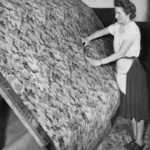
In 1851, an attempt to recapture escaped slaves in Christiana, Pennsylvania, turned into a riot in which one man was killed. The trial of one of the participants at the Old State House (Independence Hall) reflected growing abolitionist sentiment.
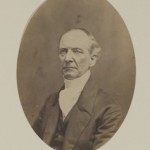
For nearly a hundred years from 1693 to 1781, Tun Tavern served residents and visitors of Philadelphia near the Delaware River waterfront with food, spirits, and sociability.
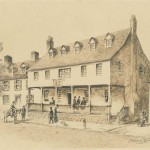
Small farms and larger properties called plantations drove the Mid-Atlantic's colonial economy. The Colonial Pennsylvania Plantation is a living history site focusing on 1760-90 farm life in southeast Pennsylvania.
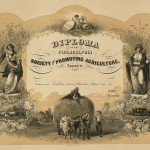
During Prohibition, Philadelphia earned a reputation rivaling Chicago, Detroit, and New York City as a liquor-saturated municipality. Near 13th and Locust Streets was The 21 Club, one of Max “Boo Boo” Hoff’s speakeasies.
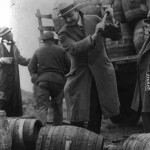
Tension over abolition led to a number of riots, one of the most notable being the 1838 destruction of Pennsylvania Hall, a meeting place for antislavery groups on Sixth Street about two blocks north of Independence Hall.
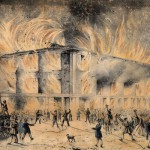
In 1798, a new federal tax and the Alien and Sedition Acts sparked resistance in several counties near Philadelphia. Ringleader John Fries was convicted of treason but pardoned. One clash between federal agents and resisters was at a tavern in Quakertown.
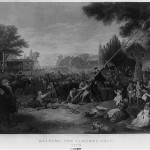
In the nineteenth century, Philadelphia became the center of the American map publishing industry. Franklin Maps in King of Prussia carries on that tradition today.
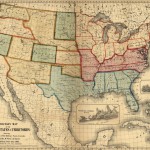
The National Park Service uses parks and sites to preserve historical, cultural, and natural resources for future access and education. The Independence National Historical Park contains over thirty sites covering centuries of Philadelphia’s history.
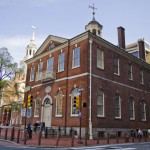
The American Philosophical Society, located here in Philosophical Hall, received specimens from Lewis and Clark's expedition to the West.
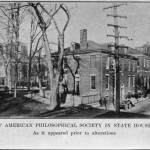
Pennsylvania Impressionist painting flourished in eastern Pennsylvania in the first half of the twentieth century. Often referred to as the “New Hope School” because artists in Bucks County produced the best-known works, the style was also practiced vigorously in Montgomery, Chester, Delaware, and Lehigh Counties, and key artists of the movement taught at the Pennsylvania […]
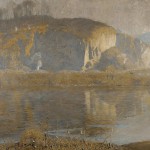
Written by Thomas Paine and published by Robert Bell's print shop at this location on January 10, 1776, the pamphlet Common Sense helped rally support for independence.
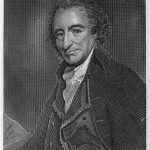
Native and Colonial Go-Betweens
In the colonial era, as conflict between the Europeans and displaced Native American tribes rose, go-betweens helped soothe tensions. Native Americans and Europeans met near Second and Market Streets in 1728 in response to tension on the western frontier.
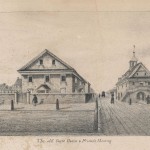
Private schools satisfied a need felt by wealthy, white families to educate their children in selective cultural and intellectual environments. William Penn Charter and other private schools became more alike through changes in the twentieth century.
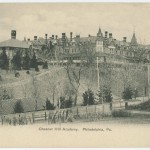
When Philadelphia's shirtwaist workers went on strike in December 1910, Philadelphia's largest shirtwaist manufacturer, M. Haber, operated at 225 S. Fifth Street.
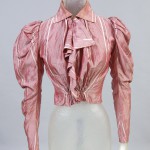
Lincoln Financial Field, home of the Philadelphia Eagles, a team that has dominated the city's sports affections since the 1960s.
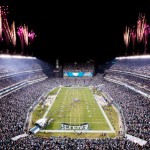
While it was the U.S. capital, Philadelphia was site of the first convictions of American citizens of treason—two of ten men tried for participation in the Whiskey Rebellion, which began in 1791 as a protest against an excise tax levied on domestic whiskey. The trial was at Old City Hall in 1795.
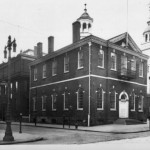
Having already captured New York in 1776, British General Sir William Howe devised a campaign to capture Philadelphia in 1777. Howe was able to occupy the city on September 26 of that year. Fort Mifflin, located on Mud Island, was bombarded to open a supply line to the occupied city.
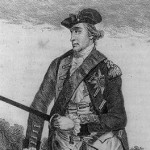
Native American-Pennsylvania Relations, 1754-89
From 1754-89, relations between Pennsylvania and native tribes eroded badly. By 1789, only one enclave remained, as others were pushed westward or killed in fights with settlers. Near Conestoga, Pa., was the site of a massacre by the Paxton Boys.
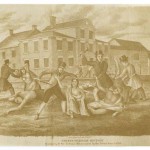
Constitutional Convention of 1787
The Constitutional Convention met in Philadelphia from May 25 to September 17, 1787, at Independence Hall (then known as the Pennsylvania State House) to draft the United States Constitution.
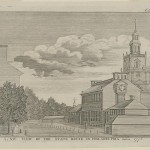
'Appeal of Forty Thousand Citizens'
Musical Fund Hall is where a convention altered the Pa. Constitution to disallow voting by black residents, a move that inspired the essay 'Appeal of Forty Thousand Citizens, Threatened with Disfranchisement, to the People of Philadelphia,' which argued against ratification.
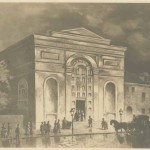
From 1840 through 1880, a commercial district of cast iron buildings developed in Center City, helping to define the downtown of the emerging modern city, clustered from the Delaware waterfront to Twelfth Street between Arch and Pine Streets. The Smythe Stores building is now a residential building.
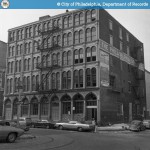
The Philadelphia Stock Exchange helped the fledgling nation raise funds to develop infrastructure for a growing industrial base and new commercial banks and insurance companies.
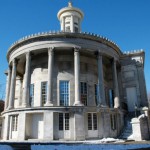
As the national capital from 1790 to 1800, Philadelphia was the seat of the federal government for a short but crucial time in the new nation’s history.
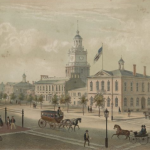
Forts and other defenses on the Delaware River and, later, along the Atlantic coast guarded Philadelphia and other commercial centers during times of military jeopardy. Fort Mifflin and other surviving forts serve as reminders of the key role forts played in the region's economic, political, and social history.
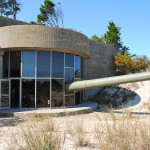
In the late twentieth and early twenty-first centuries, casino gambling became an accepted public policy in Pennsylvania, New Jersey, and other states desperate to generate tax revenue and create jobs. But the gains often came with significant social and economic costs in Atlantic City, Philadelphia, and other communities in the region.
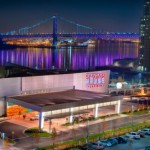
An expanding network of trails has allowed hikers, runners, and cyclists to explore their surrounding environments while meeting their recreational needs. Trails like the Schuylkill River Trail cover more than 160 miles.
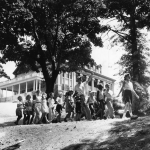
The Athenaeum of Philadelphia, a not-for-profit, member-supported library, was founded in 1814 “to disseminate useful knowledge.” Over the twentieth century, the Athenaeum has grown to support more diverse programming and records.
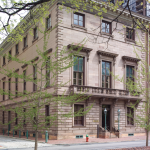
Society Hill has evolved from the mixed-use neighborhood of a colonial town, to a big city ward that contained slums, to the modern gentrified 'gold coast' marked with luxury living spaces and high-rise condominiums like the Society Hill Towers.
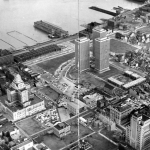
Saving Societies are member-owned cooperatives helping others to achieve future financial goals. The Philadelphia Saving Fund Society, one of Philadelphia's largest saving societies, was headquartered here until regulators seized the organization in 1992.
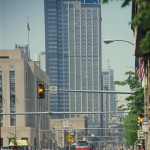
Often branded the 'Surekill Distressway,' the Schuylkill Expressway, connecting the Heart of Philadelphia to the northwestern suburbs, has been on of Pennsylvania's popular and congested highways.
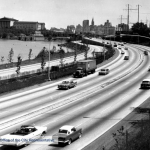
The system of scientific management pushed companies to find the most efficient way to complete tasks. Frederick W. Taylor began to practice efficiency methods at Midvale Steel, located here, in the 1870s.
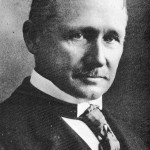
On October 10, 1871, during a tumultuous and racially polarized Election Day in Philadelphia, Ocatvius V. Catto was shot around here on south street, a block away from his home. Catto spent his life fighting against segregation and discrimination.
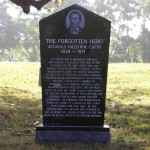
By supplying provisions to British military troops or providing safety in the form of row houses on Pine Street for 450 Acadians fleeing Nova Scotia, Philadelphia played a significant role in the Seven Years' War.
Colonization Movement (Africa)
The African colonization movement was a nineteenth century attempt to resettle free Black people from North America to countries like Liberia. The Pennsylvania Colonization Society had offices here, and raised funds for the costs of traveling to Liberia.
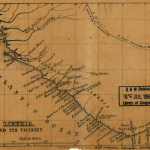
The Gallery at Market East attempted to revitalize Philadelphia’s deteriorating retail space by luring suburban shoppers to Market Street. The Gallery offered shoppers easy access to the city's public transportation and an indoor shopping space.
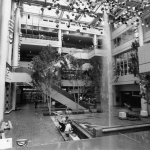
Trenton and Princeton Campaign
One of the most significant events in the Revolutionary War was the Continental Army’s crossing of the Delaware River, which preceded three crucial American victories that reignited the virtually extinguished Patriot cause.
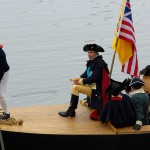
Before the Fair Housing Act of 1968, Philadelphia and its suburbs grappled with policies that severely limited African American housing options. Agencies like the Human Relations Commission and the Fair Housing Commission, located at 601 Walnut Street, assist the public against discriminatory practices.
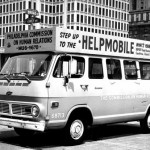
Gentrification, the process of affluent individuals settling in lower income areas, has drastically changed section of Philadelphia. In areas like Graduate Hospital, gentrification led to increased property values, but less diversity.

Indian Rights Organizations (Nineteenth Century)
In Philadelphia, an incubator for reform movements, women and religious organizations led the way in considering the plight of Native Americans.
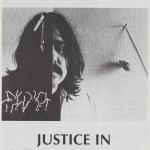
Philadelphia's role in the development of television began in the 1930s when solitary inventors and corporations began investigating the possibility of transmitting moving images over the air to a home receiver. Today, the Comcast building is the tallest in the city.
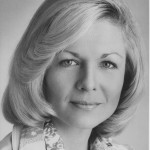
The Mason-Dixon Line, which settled a border dispute dating back to the founding of Philadelphia, is the southern boundary of Pennsylvania. The line separates Pennsylvania from Maryland and West Virginia along the 39º43ˊ N. parallel and bounds Delaware along an arc.
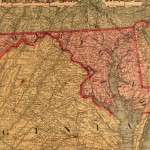
Hog Island was once an agricultural island in the Delaware River until the Twentieth Century, when sands and soils from river dredging connected it to the shore. The new, featureless, land was suitable for industry and development.
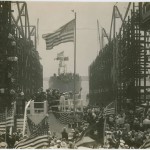
On Friday, August 28, 1964, a scuffle with police at this intersection of Twenty-Second Street and Columbia Avenue sparked a three-day riot involving hundreds of people hurling bottles at police and looting stores.
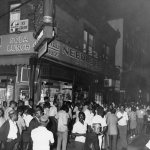
The influence of the American Playground Movement in the 1880's changed neighborhoods across Philadelphia, creating outdoor environments designed and equipped to facilitate children's play.
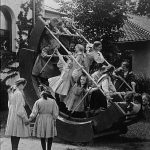
The U. S. Congress met in Philadelphia for ten years, testing the endurance of the Constitution and set the groundwork for future political practice.
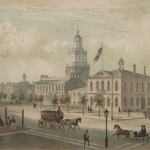
Through shared economic goals and common values of peace, individual freedom, and cultural openness, the Lenapes and their European allies established the ideals of Delaware Valley society before William Penn received his land grant in 1681. A statue of Lenape leader Tamanend stands at Front and Market Streets.
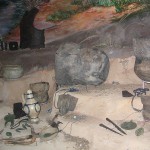
Although Christopher Columbus never sailed to Philadelphia, memorials and annual celebrations since the nineteenth century have reminded generations about his historic voyage.
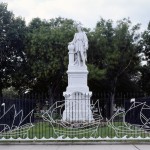
Philadelphia Industrial Development Corporation
The PIDC is a nonprofit organization that is focused on supporting existing businesses in the City of Philadelphia, while attracting new industrial and commercial development through land development programs.
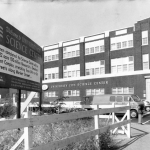
Immigration and Migration (Colonial Era)
Diverse peoples immigrating or migrating from Europe, Africa, and other American colonies before the Revolutionary War turned Philadelphia into colonial America's largest city.
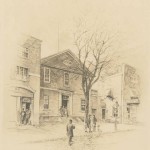
National Negro Convention Movement
National Negro Conventions held from 1830 to 1864 brought together African Americans to debate and adopt strategies to elevate the status of free Blacks in the North and promote the abolition of slavery.
Although only officially titled in 2005, the Gayborhood has served a vital role in the social and political struggles of LGBT (lesbian, gay, bisexual, and transgender) peoples of Philadelphia since the 1940s.
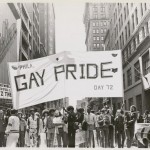
On October 4, 1779, the house of James Wilson went from being the residence of a wealthy Philadelphia merchant to becoming a stronghold against a rowdy group of militiamen taking action against war profiteers.
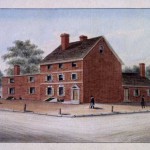
Philadelphia baseball teams like the Phillies and the Athletics have played in numerous fields across the city, while entertaining and connecting generations of Philadelphia residents together.
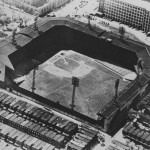
Although the United States’ involvement in World War I lasted just over a year, the conflict in Europe had a lasting impact on the Philadelphia region. The war created new opportunities for the region's industrial base, including the New York Shipbuilding Corporation of Camden.
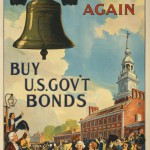
Pontiac’s War and the Paxton Boys
As a result of Pontiac'c War and the shifting opinions of Native Americans by rural Pennsylvania residents, the vigilante group known as the Paxton Boys were stopped by a militia in Germantown during their attempt to enter Philadelphia.
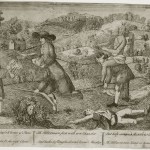
Preserved for its eighteenth-century significance as an encampment of the Continental Army during the American Revolution, Valley Forge has a more extensive past and continues to play an integral role in the region’s history and environment.
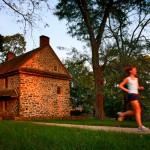
Washington Square in the early twentieth-century served as the nexus for three of Philadelphia's most prominent medical publishers. Medical students throughout the country read textbooks and manuals produced by these medical publishers.
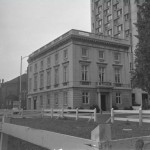
During the national explosion of immigration that took place between 1870 and the 1920s, the Philadelphia region became more diverse as it was energized by German, Italian, Jewish, and Spanish immigrants who changed the character of the places they settled.
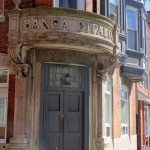
For eight remarkable decades, local Philadelphia fans consistently supported a series of Black baseball clubs whose successes generated racial pride and represented a triumph of African American institution-building.
Dubbed the “Philadelphia Plan,” the program requiring federal contractors to practice nondiscrimination in hiring tested the liberal coalition formed in the aftermath of the New Deal in Philadelphia and nationally.
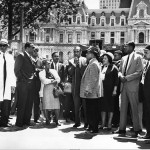
The educational opportunities in Philadelphia have expanded greatly for students throughout the twentieth century, but the result has been a greater inequality between public and private schools.
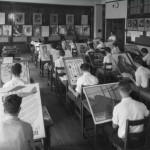
A three-week trek from Philadelphia to New York by striking child and adult textile workers launched on July 7, 1903, by Mary Harris “Mother” Jones, trained public attention on the scourge of child labor and energized efforts to end it by law.
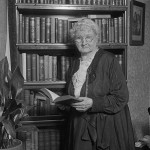
People of African descent have migrated to Philadelphia since the seventeenth century. Although African Americans faced discrimination, disfranchisement, and periodic race riots in the 1800s, the community attracted tens of thousands of people during World War I's Great Migration.
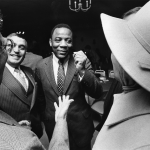
Philadelphia civil rights leader Leon H. Sullivan first came to Philadelphia to pastor Zion Baptist Church. The Global Sullivan Principles represent one of the twentieth century’s most powerful attempts to effect social justice through economic leverage.
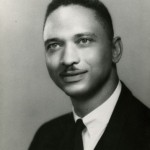
In Camden, New Jersey, the Victor Company in the early 1900s was nation’s largest manufacturer of musical recordings.
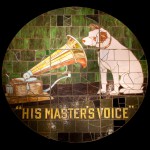
Byberry (Philadelphia State Hospital)
From the arrival of its first patients in 1911 to 1990, when the Commonwealth formally closed it down, the Philadelphia State Hospital, popularly known as Byberry, was the home for thousands of mental patients.
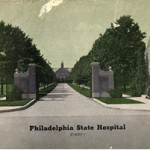
The settlement house movement spread to Philadelphia in the 1890s as a large influx of needy immigrants and unsanitary conditions in the city attracted the attention of middle-class, college-educated reformers.
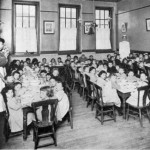
The Knights of Labor, the first national industrial union in the United States, was founded in Philadelphia on December 9, 1869. By mid-1886 nearly one million laborers called themselves Knights.
During the decade the federal capital was in Philadelphia, United States policy toward St. Domingue changed substantially. Important policy decisions emanated from the presidential residence.
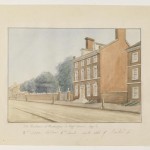
The revival of immigration to Philadelphia and its surrounding region in the early nineteenth century provided one of the most powerful elements in reshaping the city's society. The German Society of Pennsylvania assisted German newcomers in finding jobs and housing.

An estimated two million visitors attended Bicentennial celebrations, but the summer of ’76 ultimately failed to fulfill the dreams of the city and its planners. Completed projects included a new visitor center for Independence National Historical Park.
The region experienced severe economic hardship and fundamental change during the Great Depression. The Erie National Bank of Philadelphia, shown here, suffered a bank run in 1931.
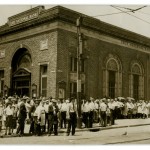
For most of the decades since the United States’ immigration restriction acts of the 1920s, Philadelphia was not a major destination for immigrants, but at the end of the twentieth century the region re-emerged as a significant gateway.
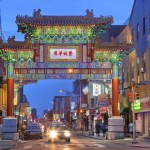
In the U.S., Philadelphians initiated the transition from imports and small-scale preparation to large-scale manufacturing of paint materials. Samuel Wetherill Jr. erected a factory in 1809 to produce lead pigments.
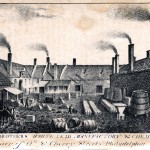
Printing and Publishing (to 1950)
As Philadelphia evolved into America’s largest port city, the number of printer-publishers operating within it grew. Philadelphia’s colonial printers generally located their shops close to highly trafficked areas.
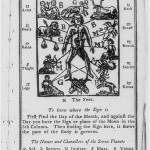
On May 8, anti-immigrant mobs torched several private dwellings, a Catholic seminary, and two Catholic churches: St. Michael’s and St. Augustine’s.
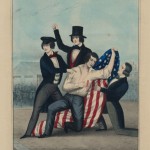
American Civil Liberties Union (ACLU)
The American Civil Liberties Union, a national legal organization, organized in Philadelphia in 1951.
Political Parties (Origins, 1790s)
Long considered the “cradle of liberty” in America, Philadelphia was also the “cradle of political parties” that emerged in American politics during the 1790s.
In 1899, the University of Pennsylvania published The Philadelphia Negro. The report about Philadelphia's 7th Ward became a distinctive landmark in the annals of sociological study and social advocacy.
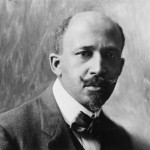
Modeled after the Crystal Palace Great Exhibition in London, the Centennial Exhibition in 1876 exhibited national pride and belief in the importance of education and progress through industrial innovation.
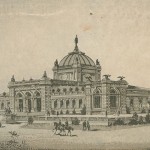
Philadelphia and surrounding southeastern Pennsylvania, Delaware, and New Jersey riverfront ports developed one of the greatest shipbuilding regions in the United States.

Ladies Association of Philadelphia
In 1780, Esther De Berdt Reed penned a broadside titled “Sentiments of an American Woman” to rouse women to participate in the Revolutionary cause.
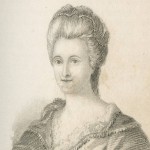
Early Philadelphia, an Atlantic trading hub, became both a focal point for the slave trade and a community of enslaved Africans. The London Coffee House was sometimes a location for slave trading.
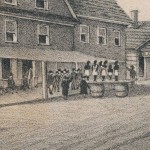
Few regions in the United States can claim an abolitionist heritage as rich as Philadelphia. The Pennsylvania Abolition Society was founded in 1775 at the Rising Sun Tavern in Philadelphia.
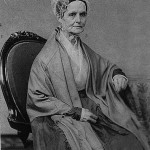
Industrial Workers of the World
In the early 1900s thousands in greater Philadelphia belonged to the IWW. Local 8, which organized the city’s longshoremen, was the most powerful and racially inclusive branch in the Mid-Atlantic.
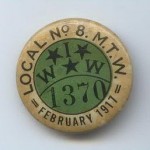
Pennsylvania Emancipation Exposition (1913)
The Pennsylvania Emancipation Exposition celebrated the fiftieth anniversary of the Emancipation Proclamation.
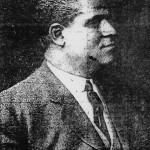
Richard R. Wright Sr. founded Citizens and Southern Bank and Trust Company, as well as the National Freedom Day commemoration, celebrated February 1.
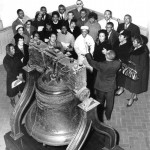
In Philadelphia, the site of the Constitutional Convention, commemoration of the document’s major anniversaries also has been complex and has reflected how regard for the Constitution and its connections to the city have evolved over time.
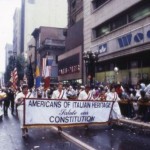
Representatives of twelve colonies assembled in Philadelphia in September 1774 at Carpenter's Hall in the First Continental Congress.
The Second Continental Congress worked through deep political divisions to create the Declaration of Independence, which was read to the public in Independence Square on July 8, 1776.
Philadelphia and Its People in Maps: The 1790s
Philadelphia was the premier urban city in North America during the Early National era. Using GIS technology, maps visualize the city between 1790 and 1800, when it was the capital of the United States.
Sesquicentennial International Exposition (1926)
In 1926, Philadelphia hosted the Sesquicentennial International Exposition opened to great fanfare but failed to attract enough visitors to cover its costs.
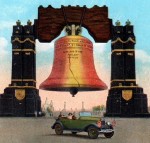
As the dominant response to the housing needs of low-income residents since the 1930s, public housing in the Philadelphia region provided shelter for thousands. The Carl Mackley Houses opened in 1935 in the Juniata Park neighborhood.
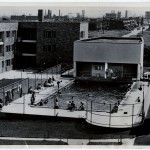
Doctors in Philadelphia diagnosed the first local case of what would later become known as AIDS 1981.The Mazzoni Center formed the Philadelphia AIDS Task Force to provide social services to those affected.
Philadelphia's Civil War sanitary fairs represented the spirit of patriotic volunteerism that pervaded the city during the Civil War. These grassroots efforts climaxed at the Great Central Fair of 1864 in Logan Square.
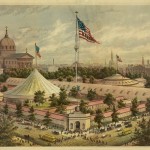
American Bandstand (1952-89) was a massively popular music television program with strong Philadelphia roots, storied national success, and the power to shape the music industry and society.
The history of Girard College reflects the history of Philadelphia and the nation. Opened in 1848, Girard College was established under a bequest from wealthy philanthropist Stephen Girard (1750-1831).
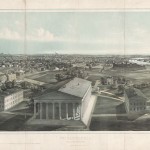
Independence National Historical Park
Independence National Historical Park preserves and provides access to Independence Hall, the Liberty Bell, and other American Revolution and early American history sites.
Originally the Pennsylvania State House, this landmark is associated with the Declaration of Independence, the U.S. Constitution, and is now a treasured shrine, tourist attraction, and World Heritage Site.
World War II, which created change for industries, populations, and politics in many urban areas in the United States, had a transforming effect on the Philadelphia region.
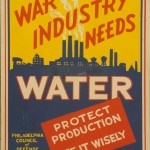
Led by John Wanamaker, Philadelphia's Market Street department stores became the national model. Known as the "Big Six," these businesses were close to the city's rail terminals and subway stations.
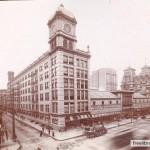
For more than a century, the Liberty Bell has captured Americans’ affections and become a stand-in for the nation’s vaunted values: independence, freedom, unalienable rights, and equality.
Kimmel Center for the Performing Arts
The Kimmel Center for the Performing Arts was designed as the centerpiece of the Avenue of the Arts, a rebranded stretch of Broad Street devoted to performing arts venues.
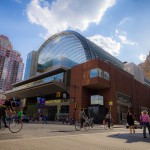
Higher Education: Private (Religious)
The religious diversity of Philadelphia led to the creation of specialized institutions of higher learning reflecting each religion's values. Catholic-affiliated schools continue to embrace their religious banner, less so those schools with different affiliations.
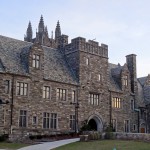
The original office of the Bank of North America was established at 309 Chestnut Street in 1781. In the beginning, the bank's offices were located in the home of the bank's first cashier, at the same address.
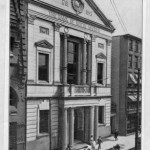
African American Museum in Philadelphia
The African American Museum in Philadelphia (AAMP) was the first major museum of Black history and culture established by an American city.
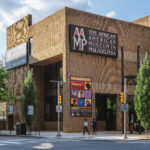
Philadelphia has been a key center in popular music since the late eighteenth century. Philadelphia International Records, known for "the Sound of Philadelphia," was headquartered at 309 S. Broad Street.
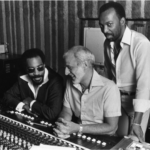
Christ Church was the site for discussions about the foundation of a new American church, separate from the Church of England.
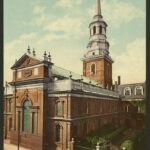
Philadelphia has been at the forefront of women's civil rights activism from its inception to the 21st century. Paulsdale is the preserved childhood home of women's civil rights activist Alice Paul and location of the Alice Paul Institute.
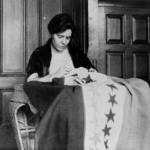
From the 1880s through 2017, postal services operated at Ninth and Chestnut Streets in Center City Philadelphia.
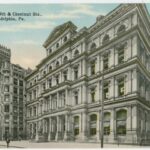
The Morans, a multi-generational family of American artists, lived and worked in Philadelphia during the second half of the nineteenth century. Many exhibited their work at the Pennsylvania Academy of Fine Arts.
The Delaware River sits at the center of the history and development of Philadelphia and the surrounding communities.
Timeline
Related Reading
Gallman, J. Matthew. Mastering Wartime: A Society History of Philadelphia During the Civil War. New York: Cambridge University Press, 1990.
Gregg, Robert. Sparks from the Anvil of Oppression: Philadelphia’s African Methodists and Southern Migrants, 1890-1940. Philadelphia: Temple University Press, 1993.
Hutchins, Catherine E. Shaping a National Culture: The Philadelphia Experience, 1750-1800. Winterthur, Del.: Henry Francis Winterthur Museum, 1994.
Laurie, Bruce. Working People of Philadelphia, 1800-1850. Philadelphia: Temple University Press, 1980.
Mires, Charlene. Independence Hall in American Memory. Philadelphia: University of Pennsylvania Press, 2002.
Nash, Gary B. First City: Philadelphia and the Forging of Historical Memory. Philadelphia: University of Pennsylvania Press, 2002.
—–. Forging Freedom: The Formation of Philadelphia’s Black Community, 1720-1840. Cambridge, Mass.: Harvard University Press, 1988.
—–. Urban Crucible: Social Change, Political Consciousness, and the Origins of the American Revolution. Cambridge, Mass.: Harvard University Press, 1979.
Sautter, R. Craig. Philadelphia Presidential Conventions. Highland Park, Ill.: December Press, 2000.
Related Collections
Independence National Historical Park Library and Archives, Merchants’ Exchange Building, 143 S. Third Street, Philadelphia.
National Archives at Philadelphia, 900 Market Street, Philadelphia.
